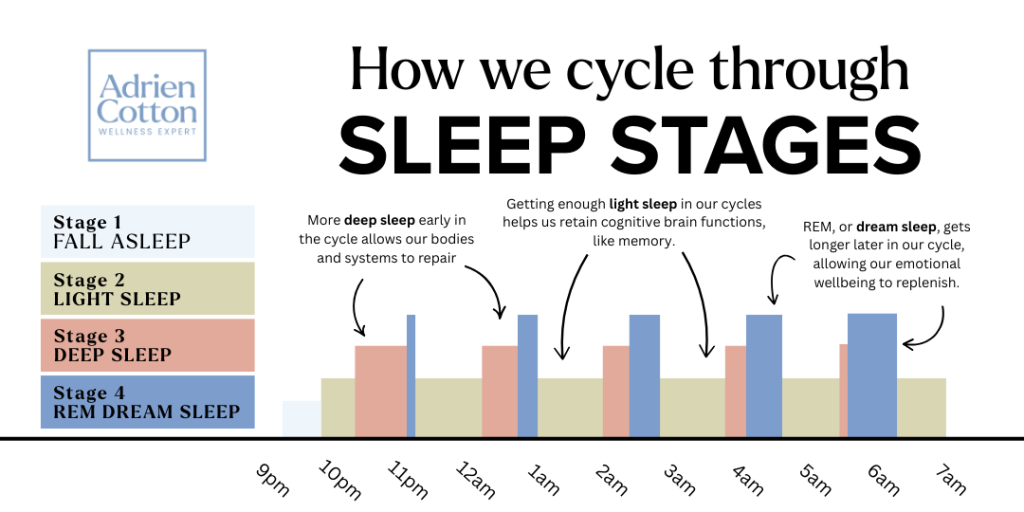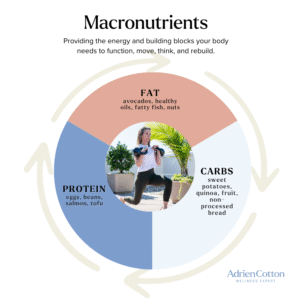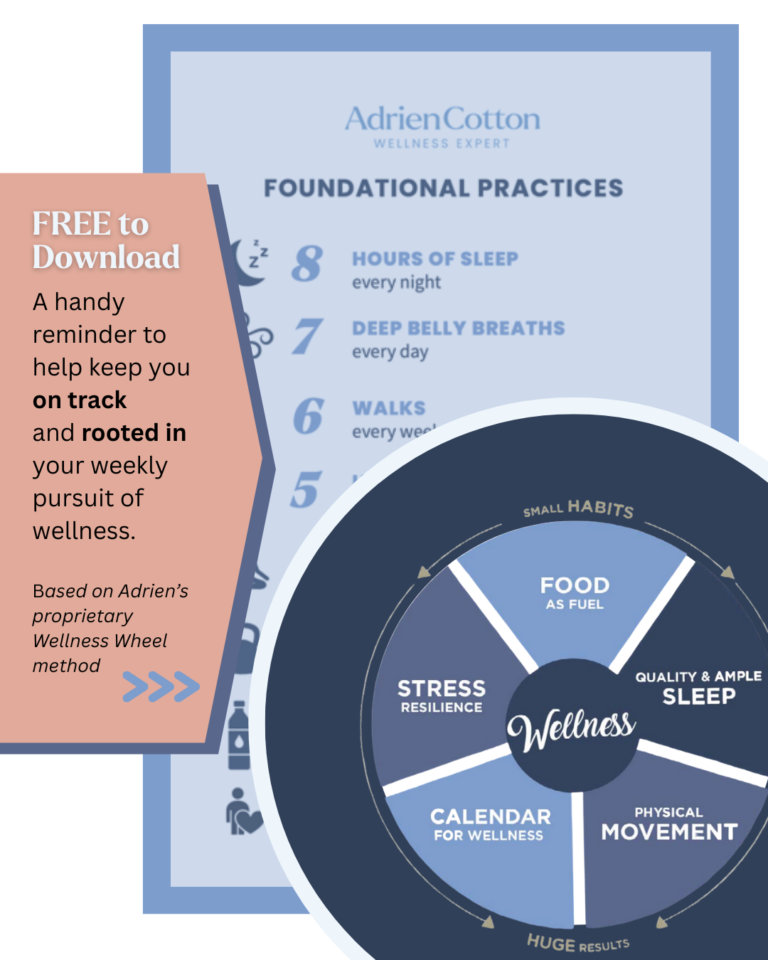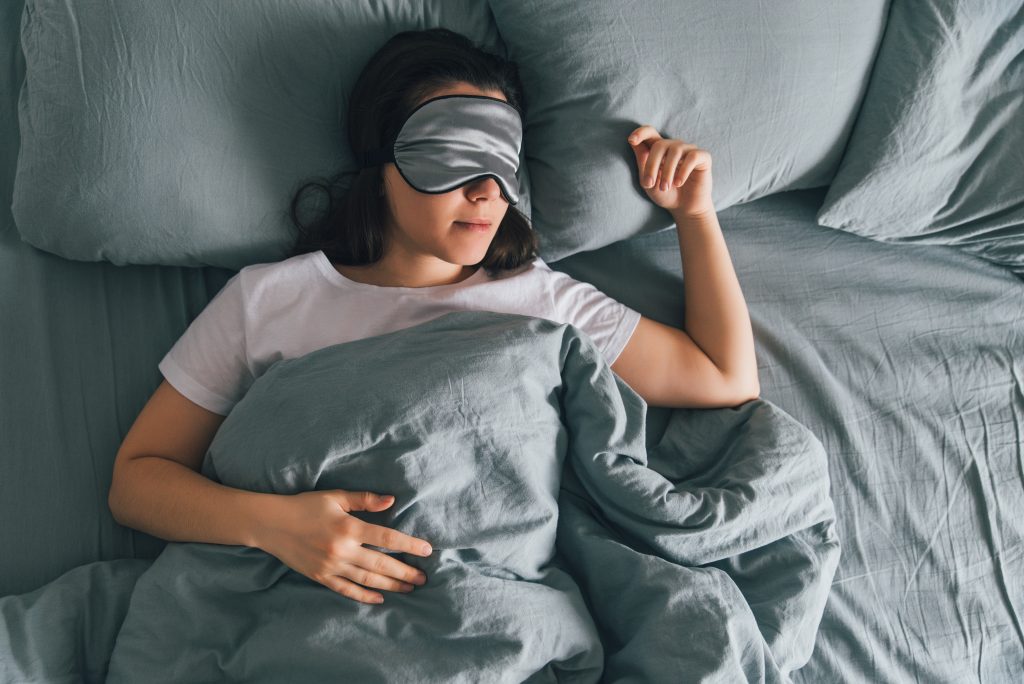
So often, I hear women ask whether sleep is really that big of a deal.
YES!
Recently my daughter, who knows I am passionate about sleep, asked me if I had an article to explain simply why it is so important. I did not! I have plenty of tips on how to get better sleep, and how we can manage sleep better during menopause. But heaven forbid, nothing straightforward to explain the basics of sleep!
So, here it is–my Sleep 101, which starts with understanding sleep cycles, the basic architecture of human sleep.
Why is Sleep So Important?
Did you know that your brain is busier when you are asleep than when you are awake? Sleep is when your body and brain do some of their most important work: Your brain processes memories, clears out toxins, and resets your emotional balance, while your body repairs cells, builds muscle, and regulates key hormones like cortisol and insulin.
Good sleep is not a luxury—it’s a necessity for overall health and well-being. Sleep is the foundation that supports almost everything we do, and understanding what happens each night, beginning with what happens during our sleep cycles, can help create a positive sleep mindset and make sleep the most important appointment of your day!
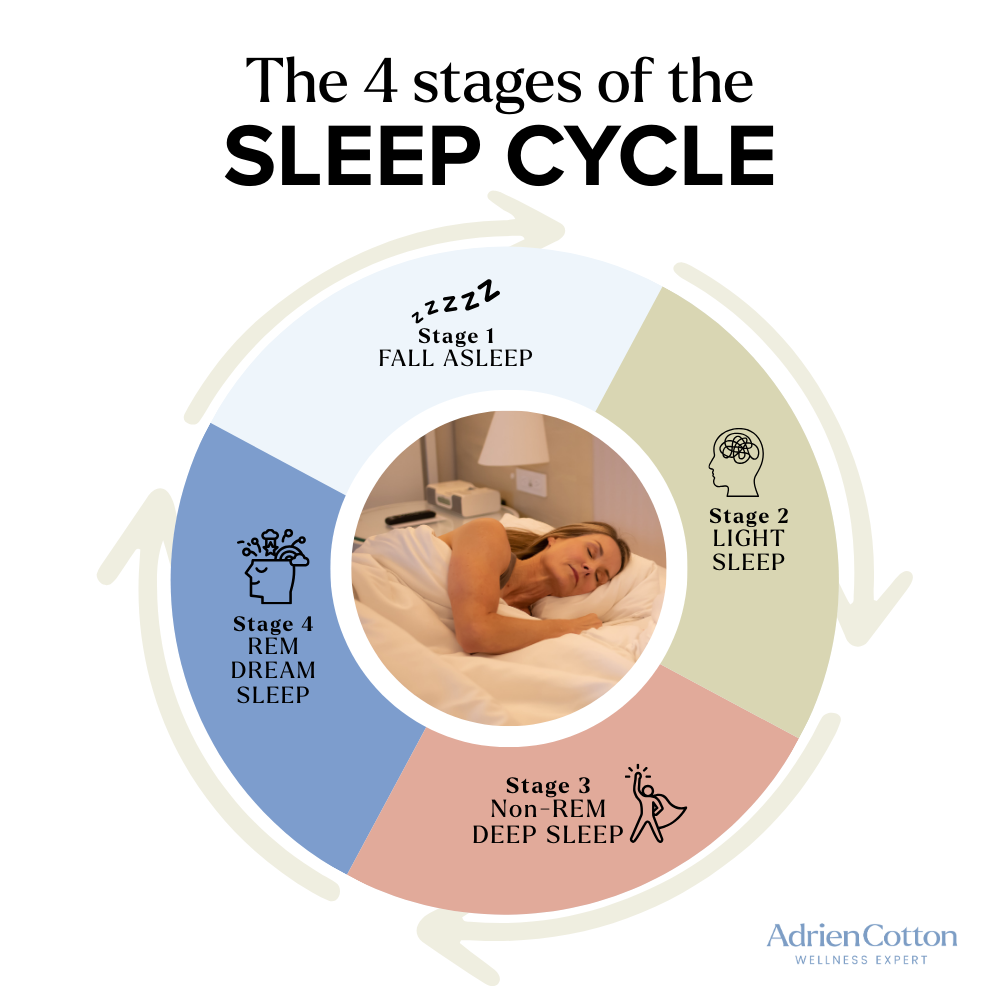
How Much Sleep Should I Get?
Each night we experience four sleep “stages” per one sleep “cycle”, lasting on average about 90 minutes each cycle. Sleep experts recommend 4-6 sleep cycles for a total of 7-9 hours of sleep per night. Getting enough restorative sleep is what helps a person feel alert, focused, and emotionally balanced.
Lack of quality sleep affects nearly every system in the body. It can weaken immune response, make you hungrier for carbs and sugar, and raise the risk for chronic conditions like heart disease, Alzheimer’s and diabetes. Poor sleep can lead to brain fog, irritability, and make managing stress or emotions impossible.
The Four Stages of the Sleep Cycle
- Stage 1: This is a very light sleep stage that lasts around five minutes at the beginning of the night, where the brain and body prepares to transition into the deeper sleep stages. Here, our heart rate slows and brain waves shift from wakeful to slower rhythms. Stage 1 is reserved solely for falling asleep and the transition to sleep.
- Stage 2: This is a longer sleep stage where our brains are setting up to consolidate and store memories. During this stage, our heart rate and body temperature drop and our brain waves slow aside from little bursts of activity called “spindles,” associated with memory consolidation and learning. This is where we sort and organize information from our day. Don’t take for granted that you remember your important meeting when you wake up the next morning–this is when it happens!
- Stage 3: This next stage is Non-REM (Rapid Eye Movement) deep sleep, where we begin to physically repair and detox and restore ourselves from the day’s activity. This is a very important stage where the body releases growth hormones, strengthens our immune system and literally flushes our brain waste–including the protein linked to Alzheimer’s.
- Stage 4: Around 90 minutes after we fall asleep, the fourth stage of the cycle occurs where our brains enter REM, or dream sleep. Here, the brain becomes more active, to a state similar to when we are awake. This is where we process experiences, trauma, and emotions, and helps with our problem-solving. This stage is vital to our emotional health and has been called the antidepressant of sleep stages.
- Once we complete Stage 4 we cycle back to Stage 2, since the first stage is reserved for falling asleep.

The Importance of REM
In our early cycles each night, we actually spend longer in Stage 3, our Non-REM deep sleep. Later in the night on our third or fourth cycle of sleep, we spend more time experiencing Stage 4, our REM dream sleep. This is why, when women tell me about the worrisome 1-3 am hours lying awake with night sweats, it is a must-resolve on my list. Being awake in those early hours means you are missing out on vital REM sleep, where your brain repairs and restores balance to your emotional wellbeing!
So, there it is. I hope knowing the basics of sleep cycles will help you understand why I am committed to the importance of sleep. It is vital, it is primal, and getting proper sleep really will make you a much happier person!
Considering a Wearable Device?
Our community has been devoted to finding the best way to track sleep. We are a combination of Apple Watch, FitBit, and Whoop wearers. Polysomnographes (sleep studies) measure brain activity (EEG), eye movement, muscle activity, heart rate, oxygen levels, breathing patterns, and much more.
For sleep, the Apple Watch measures movement, heart rate, and, on newer models, blood oxygen levels and skin temperature. My Whoop detects sleep stages, due to its focus on recovery and continuous physiological monitoring (it samples more data more frequently), tracks heart rate variability (HRV), respiratory rate, blood oxygen (SpO₂) (how well your lungs are oxygenating your blood), and gives personalized recommendations (like whether you need more sleep based on strain and recovery). FitBit measures sleep stages, heart rate, breathing rate, heart rate variability (HRV), skin temp variation, and SpO₂.
I am happy to jump on a call to translate the terminology and confusion you may feel when reading your sleep scores!
